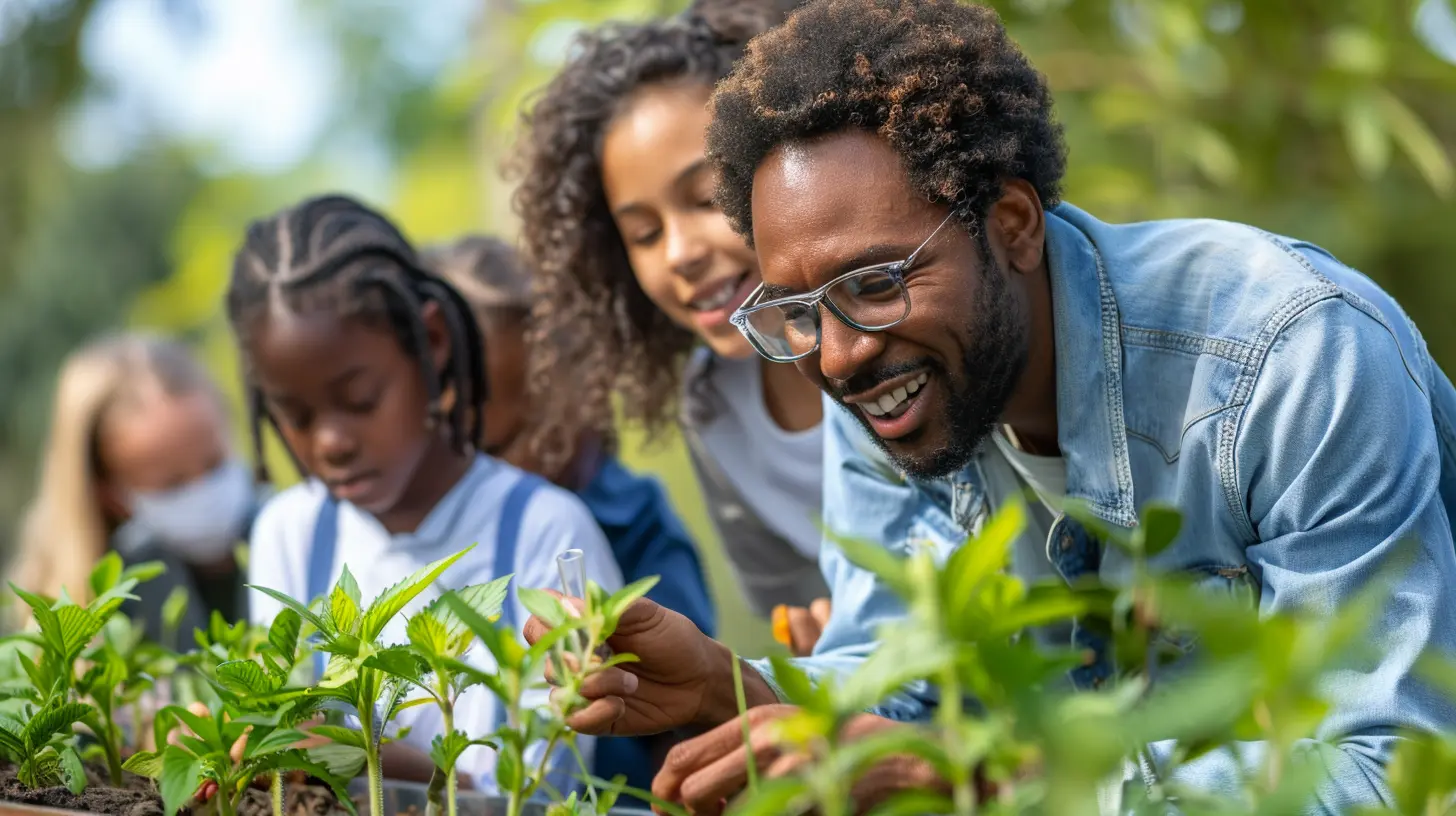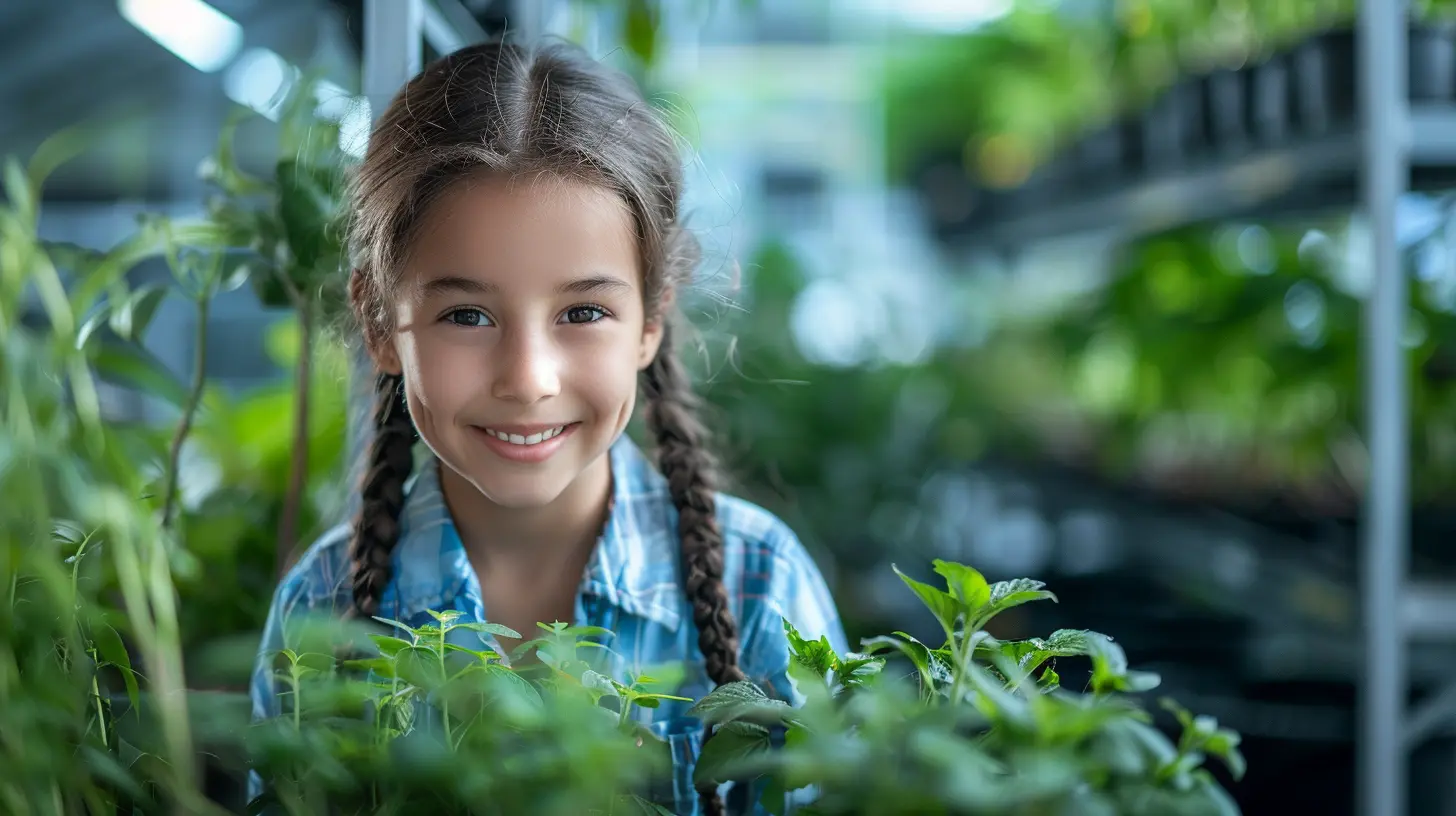How to Incorporate Environmental Science into Your STEM Curriculum
14 June 2025
Environmental science is more important now than ever, and integrating it into STEM (Science, Technology, Engineering, and Mathematics) education is crucial. By weaving environmental topics into STEM lessons, educators can inspire students to understand and solve real-world problems—like climate change, pollution, and sustainability.
But how do you do it effectively? How can educators make environmental science a natural part of STEM learning without overwhelming students (or themselves)?
Don't worry; this guide breaks it all down into simple, actionable steps. Whether you're teaching elementary school kids or college students, you’ll find practical ways to bring environmental science to life in your STEM curriculum. 
Why Environmental Science Belongs in STEM
STEM education is all about solving problems, and what bigger problem is there than protecting our planet? By incorporating environmental science, students can:- Apply STEM concepts to real-world issues – rather than just learning theories, they get hands-on experience solving actual environmental challenges.
- Develop critical thinking skills – analyzing environmental problems teaches students to weigh evidence, evaluate solutions, and think like scientists.
- Make learning more engaging – let’s face it, students connect better with lessons that relate to their lives. Climate change, renewable energy, and conservation are all topics that affect their future.
- Prepare for future careers – green jobs are on the rise. Teaching students about sustainability and environmental science gives them an edge in careers focused on technology, engineering, and science.
Now that you know why environmental science matters in STEM, let's look at how to incorporate it into your lessons. 
1. Connect Environmental Science to Core STEM Subjects
The best way to integrate environmental science is by linking it to existing STEM topics. There's no need to reinvent the wheel—just tweak your lessons to include environmental elements.Science
- Climate Change & Biology: When teaching ecosystems and biodiversity, discuss how climate change affects different species.- Chemistry & Pollution: Dive into water contamination, air pollution, or chemical reactions involved in greenhouse gases.
- Physics & Renewable Energy: Use concepts like motion and force to explain how wind turbines or solar panels generate power.
Technology
- Coding for Sustainability: Teach students how to write programs that analyze environmental data (like tracking air quality or mapping deforestation).- Artificial Intelligence & Conservation: Introduce AI tools that help identify endangered species or predict natural disasters.
- Smart Cities & IoT: Show how smart sensors monitor energy use and reduce environmental waste.
Engineering
- Sustainable Design: Have students design eco-friendly buildings, bridges, or transportation systems.- Water Filtration Projects: Challenge students to create DIY water filters using household materials.
- Recycling Innovations: Encourage them to develop creative ways to turn waste materials into useful products.
Mathematics
- Carbon Footprint Calculations: Teach data analysis by having students calculate their own carbon footprint and explore ways to reduce it.- Graphing Climate Trends: Use real-world climate data to create graphs and analyze patterns in temperature changes.
- Probability & Natural Disasters: Help students understand the likelihood of events like hurricanes or wildfires based on historical data.

2. Use Hands-On Projects and Experiments
Nothing makes environmental science more exciting than doing science. Give students the chance to get their hands dirty—literally.- Build Solar Ovens: Teach the science of solar energy by having students create their own solar-powered cookers.
- Grow a Classroom Garden: Let students study plant growth, soil health, and the impact of weather on crops.
- Water Quality Testing: Have students collect and analyze water samples from local streams or ponds.
The more interactive the learning, the more it sticks. Plus, these projects show students that they have the power to create real change. 
3. Incorporate Environmental Science into Coding and Robotics
Think environmental science is just about plants and animals? Think again. With the rise of technology, there’s a huge intersection between programming, robotics, and sustainability.- Coding for Conservation: Teach students to code apps that track carbon footprints or report pollution.
- Robots for Recycling: Have students build robots that sort recyclables or clean up small waste items.
- Drones & Environmental Monitoring: Introduce drones that track deforestation, monitor wildlife, or measure air quality.
Not only does this make learning more fun, but it also highlights how STEM careers can directly impact the environment.
4. Take Learning Outdoors
Sometimes, the best classroom isn’t a classroom at all. Taking students outside brings environmental science to life in a way that textbooks just can’t.- Nature Walks & Biodiversity Studies – Observe plants, insects, and animal life in your local area.
- Community Clean-Up Projects – Organize activities where students collect litter or plant trees.
- School Garden or Composting – Teach sustainability by growing food or composting cafeteria waste.
When students experience nature firsthand, they develop a deeper appreciation for the environment—and are more likely to protect it.
5. Make Use of Citizen Science Projects
Citizen science lets students contribute to real scientific research. They work alongside professional scientists by collecting data, reporting observations, and analyzing results.Some great projects include:
- NASA’s Globe Observer: Students track environmental changes using a mobile app.
- The Great Backyard Bird Count: They can observe and record local bird species.
- iNaturalist: A tool where students photograph plants and animals to help scientists document biodiversity.
Participating in these projects makes learning more meaningful and gives students a sense of responsibility for the world around them.
6. Introduce Environmental Science through Storytelling
All great lessons stick in our minds because they tell a story. Instead of just presenting facts, engage students with narratives.- Share real-life case studies of young environmental activists like Greta Thunberg.
- Watch documentaries like Our Planet to show the impact of climate change.
- Read books or articles about historical environmental challenges and solutions.
Stories make abstract concepts personal, relatable, and easier to remember.
7. Encourage Sustainability Challenges
Gamify environmental learning by turning it into a challenge. Students love competition, so why not make sustainability a fun classroom goal?- Zero-Waste Challenge – Have students track how much waste they generate and find ways to reduce it.
- Energy-Saving Challenge – Students can compete to lower their home or school’s energy consumption.
- Plastic-Free Challenge – Encourage them to avoid single-use plastics for a week and share their experiences.
These challenges put environmental science into everyday practice, reinforcing habits that could last a lifetime.
8. Invite Guest Speakers and Go on Field Trips
Hearing from experts makes a huge difference. If possible, invite scientists, engineers, or environmental activists to speak to your class.Better yet, take students on field trips to:
- Recycling centers to see waste management in action.
- Nature reserves to experience conservation efforts firsthand.
- Science museums that showcase sustainability innovations.
Seeing real-world applications of what they learn in class makes students more excited about environmental science.
Final Thoughts
Incorporating environmental science into your STEM curriculum doesn’t have to be overwhelming. It’s about making small, meaningful connections between what students already learn and the world around them.By using hands-on projects, real-world applications, and engaging challenges, you can inspire the next generation of scientists, engineers, and innovators to care about the planet—and take action.
Because let’s be honest—if we don’t teach them to protect the Earth, who will?
all images in this post were generated using AI tools
Category:
Stem EducationAuthor:

Monica O`Neal
Discussion
rate this article
2 comments
Onyx McKeehan
Sure, just sprinkle magic!
June 15, 2025 at 11:19 AM

Monica O`Neal
Absolutely! Integrating environmental science can feel magical when you connect real-world issues with hands-on STEM activities.
Halle Wagner
Great insights! Essential for fostering environmental awareness.
June 15, 2025 at 3:56 AM

Monica O`Neal
Thank you! I'm glad you found it helpful for promoting environmental awareness in STEM education.


